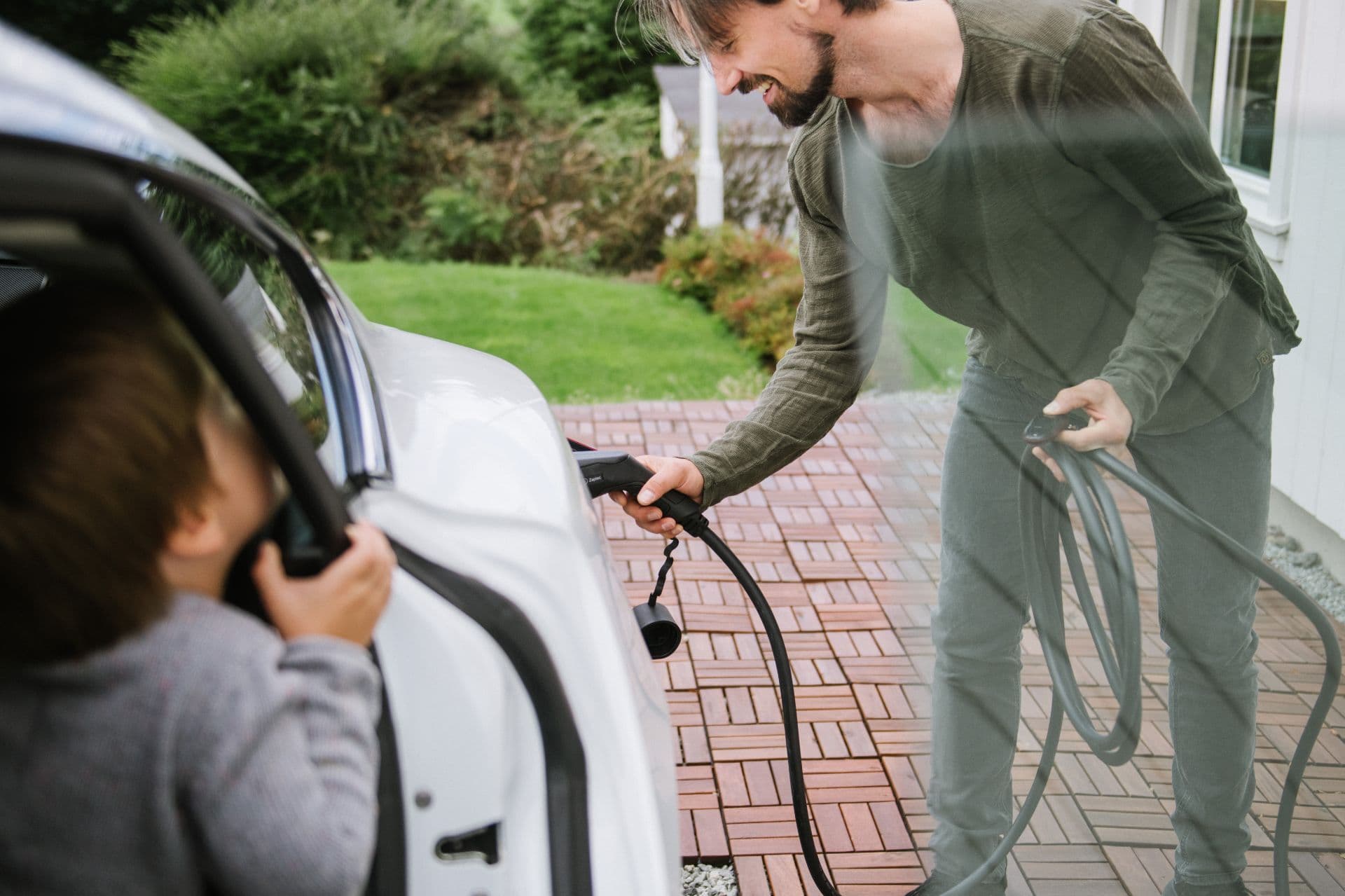How to charge your electric car for the first time
Have you bought an electric car and are unsure how to charge it?
Have you bought an electric car and are unsure how to charge it?

Let’s start with a simple rule of thumb: Plug the charger into the power source first, then into the car. And when you’re done charging, reverse this process: Unplug the charging cable from your car first.
When buying an electric car, charging cables for home charging, so-called “AC charging”, are usually included. There are two types of charging cables: Type 1 and Type 2. Which one you need depends on your car. The charging plugs are designed differently, so it’s easy to tell the difference.
Type 1 is a 1-phase plug that charges with an output of up to 230V. It is mainly with certain older electric car models produced before 2018 (as well as Asian and American car models) that you get Type 1 delivered as standard.
Type 2 is standard on cars delivered in Europe and supports both 1-phase and 3-phase charging. This is by far the most common connector, and you can find it on most modern electric cars, from manufacturers such as Tesla, Volvo, BMW, Audi and Volkswagen. Type 2 is designed for 400V power systems, but also works with 230V power systems.
All electric cars also come with an emergency charger. This has a Type 1 or Type 2 charging plug at one end that plugs into the car, and a plug at the other end that plugs into a standard wall socket. Some emergency chargers allow you to choose different strengths of amperes, so you can charge at facilities with limited capacity, such as an older cabin.
Connect your charging cable to the vehicle and the charger. This portable charging cable is perfect to stash in your car for situations in which there are no other charging options, such as when visiting other people. At the same time, it is important to point out that it is not recommended to use an emergency charger as your regular charging solution when charging at home, as in the worst case this can start a fire in the electrical system.
An electric car continuously draws a lot of electricity over a long period of time, and a standard wall socket is therefore not suitable for such a load. According to the Directorate for Civil Protection (DSB), regular charging of electric cars in sockets set up for other purposes is a violation of the electrical regulations, because this is to be regarded as a change of use. When charging via a standard wall socket, a separate circuit is required. In addition, the circuit must be secured with a so-called “Type B ground fault circuit breaker”, and its capacity may not exceed 10 amperes.
For safe home charging, DSB recommends that all electric car owners invest in a charging station installed by a licensed electrician. A charging station is connected to a separate circuit that is designed to withstand high power and load over time. It also has built-in safety features that manage all the risks that may arise when charging an electric car.
With Zaptec Go, you will have one of the safest home chargers on the market. It monitors charging and cuts the power supply if anything is wrong. The charger also has a physical latch that holds the charging connector in place as long as power is being transmitted. This prevents flying sparks or electric arcs.
Using a home charger is easy. Simply insert the Type 1 or Type 2 charging plug into your car and the charging station will handle the rest. When choosing a home charger, it is advisable to choose a smart charger so that you can monitor the charging and control both the output and the time. When you activate smart charging, your electric car will automatically charge when the power is cheapest. This saves you money and means you don’t need to physically plug in and unplug the charging cable. With a smart charger, you’re also equipped for your future charging needs and avoid having to replace your home charger if these needs change. With Zaptec Go, you can also lock the charging cable to avoid theft.
Happy charging!